How the rain sensor works and works
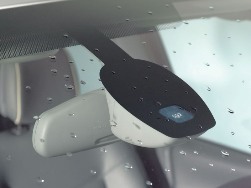 The essence of the problem lies in the fact that precipitation and road dirt pose a threat (at least an obstacle) to the safe driving of the vehicle. In the end, it is simply not comfortable, and the driver himself would not want to be distracted by manually turning the wiper blades on and off, adjusting their operation, etc.
The essence of the problem lies in the fact that precipitation and road dirt pose a threat (at least an obstacle) to the safe driving of the vehicle. In the end, it is simply not comfortable, and the driver himself would not want to be distracted by manually turning the wiper blades on and off, adjusting their operation, etc.
It is much better and more convenient if automation did this, and not the driver. Specialists have long been developing and improving systems to automate this process. And if earlier rain sensors were installed only on expensive cars, today they are available to almost everyone in the form of separate devices, and middle-class cars have recently often been equipped with them by default. A rain sensor is installed inside the car opposite the windshield ...
 In gasoline internal combustion engines, spark plugs are used to ignite the air-fuel mixture. An electrical discharge with a voltage of thousands of volts occurs between the electrodes of the spark plugs at each cycle of the engine, and at certain times ignites the fuel-air mixture inside the cylinder.
In gasoline internal combustion engines, spark plugs are used to ignite the air-fuel mixture. An electrical discharge with a voltage of thousands of volts occurs between the electrodes of the spark plugs at each cycle of the engine, and at certain times ignites the fuel-air mixture inside the cylinder.
For the first time, a spark plug, as we know it to this day, was developed in 1902 by scientist Robert Bosch to be powered by a high-voltage magneto, designed in the workshop of his eponymous company. From that moment on, spark plugs began to be widely used in internal combustion engines, and the spark plug device has still not been structurally changed, only the materials used in it have evolved. Fundamentally, the spark plug includes the following main elements: a metal body, an insulator and a central conductor ...
What batteries are used in modern electric vehicles
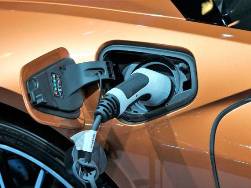 The electric car is the most modern vehicle, and motorists are increasingly changing to them in many countries of the world. About a million people around the world are actively using electric cars, because unlike traditional cars that run on combustible fuel, an electric car is more economical to operate and generally more practical.
The electric car is the most modern vehicle, and motorists are increasingly changing to them in many countries of the world. About a million people around the world are actively using electric cars, because unlike traditional cars that run on combustible fuel, an electric car is more economical to operate and generally more practical.
Nevertheless, when changing a vehicle to an electric one, the driver will inevitably have questions regarding maintenance, repair, the cost of batteries, etc. Despite all these questions, it turns out that electric cars ultimately still have a number of advantages over ordinary cars. And in this article we will talk specifically about batteries for electric cars. So, electric cars are cars that use electric energy stored in a battery for their drive ...
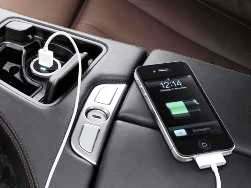 The development of electronics and semiconductor technology in the early 21st century led to the fact that no modern car can do without an extensive power supply network, called the car's on-board network. The vehicle’s on-board network is a direct current power system, and includes both sources and consumers of electric energy. While the thermal energy of the burned fuel is directly suitable only for providing mechanical movement, electric energy is universal, and is able to power a variety of devices, ranging from lamps in headlights to a spark ignition system.
The development of electronics and semiconductor technology in the early 21st century led to the fact that no modern car can do without an extensive power supply network, called the car's on-board network. The vehicle’s on-board network is a direct current power system, and includes both sources and consumers of electric energy. While the thermal energy of the burned fuel is directly suitable only for providing mechanical movement, electric energy is universal, and is able to power a variety of devices, ranging from lamps in headlights to a spark ignition system.
So, there are only two sources of energy in a car: a battery (usually lead-acid) and a generator that receives mechanical rotation directly from an internal combustion engine. And since the battery is also a consumer during recharging, then the main source of energy in a modern car ...
How electronic speed sensors for cars are arranged and work
 Automobile speedometers have not been limited in their operation to mechanics for a long time. Today, electronic speed sensors are used to measure speed, counting electrical pulses using optoelectronic or magnetoresistive circuits. Thus, modern speed sensors are two types of sensors - optoelectronic and cableless (based on a magnetoresistive element).
Automobile speedometers have not been limited in their operation to mechanics for a long time. Today, electronic speed sensors are used to measure speed, counting electrical pulses using optoelectronic or magnetoresistive circuits. Thus, modern speed sensors are two types of sensors - optoelectronic and cableless (based on a magnetoresistive element).
The mechanical rotation is transmitted to the optoelectronic sensor from the so-called “speedometer cable” coming from the gearbox of the car, and already inside the sensor itself, using the photo-interruption unit, the cable rotation speed is converted into electrical pulses of the corresponding frequency. As for the sensor without a cable, its magnetoresistive element is simply installed in the transmission, so it does not need a cable at all. The optoelectronic sensor is driven ...
How to measure battery capacity and convert farads to amp hours
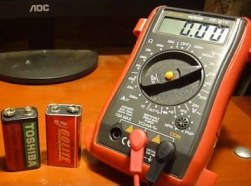 The charge Q, as the amount of electricity, is measured in coulomb (C), the electric capacity of the capacitors C is in farads, microfarads (microfarads), but the battery capacity is measured for some reason not in farads, but in ampere-hours (milliampere-hours). What would that mean? One ampere is a pendant in one second, we know from the course of physics that if an electric charge equal to 1 pendant passes through a conductor in 1 second, then a current of 1 ampere flows through the conductor.
The charge Q, as the amount of electricity, is measured in coulomb (C), the electric capacity of the capacitors C is in farads, microfarads (microfarads), but the battery capacity is measured for some reason not in farads, but in ampere-hours (milliampere-hours). What would that mean? One ampere is a pendant in one second, we know from the course of physics that if an electric charge equal to 1 pendant passes through a conductor in 1 second, then a current of 1 ampere flows through the conductor.
And then what is ampere hour? An ampere-hour (Ah) is considered to be the battery capacity at which, according to a given current of 1 ampere, the battery is discharged 1 hour before the minimum allowable voltage. For example, for a lithium-ion battery of size 18650, with a capacity of 3400 mAh, this means that the battery at a current of 340 mA can give its charge in 10 hours, and a car battery with a capacity of 55 Ah is discharged from about 12.8 to 10.8 voltsin 2 hours at a discharge current of 27.5 A ...
Lead-acid battery - device and principle of operation, varieties
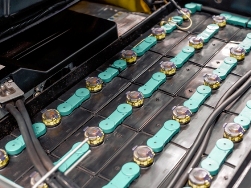 The design and functioning of a classic lead-acid battery are based on the reversible electrochemical reactions of lead and lead dioxide with an aqueous solution of sulfuric acid: when the battery is discharged to a load, lead oxide at the cathode and lead at the anode, interacting with sulfuric anions, turn into lead sulfate ( lead dioxide is reduced at the cathode, lead is oxidized at the anode).
The design and functioning of a classic lead-acid battery are based on the reversible electrochemical reactions of lead and lead dioxide with an aqueous solution of sulfuric acid: when the battery is discharged to a load, lead oxide at the cathode and lead at the anode, interacting with sulfuric anions, turn into lead sulfate ( lead dioxide is reduced at the cathode, lead is oxidized at the anode).
When the battery is charging, lead sulfate on the plates decays into ions, lead oxide forms on the cathode, and metallic lead again on the anode. In this case, the concentration of the sulfuric acid solution increases, since sulfuric acid ions reuniting with hydrogen again form sulfuric acid. Thus, it is possible to use the same battery again and again, simply recharging it from time to time.During battery discharge concentration...
What is battery self-discharge?
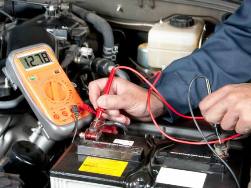 If the battery is not used for some time, keeping its external circuit open, then a few days later you can find that the voltage level at its terminals has become significantly lower than it was originally. This is due to the phenomenon of self-discharge - a normal phenomenon for any battery, but if self-discharge is too intense, then the norm develops into a problem - the capacity noticeably decreases, it would seem, for no apparent reason.
If the battery is not used for some time, keeping its external circuit open, then a few days later you can find that the voltage level at its terminals has become significantly lower than it was originally. This is due to the phenomenon of self-discharge - a normal phenomenon for any battery, but if self-discharge is too intense, then the norm develops into a problem - the capacity noticeably decreases, it would seem, for no apparent reason.
Let's look at this topic, consider the essence and ways of preventing this kind of trouble. It would be advisable to consider the problem of self-discharge by the example of a lead-acid battery in a car, because who who, and motorists know firsthand how sometimes it can be overwhelming if the battery itself discharges simply while in a muffled car in a parking lot or in a garage, and its circuit was accurately open ...
